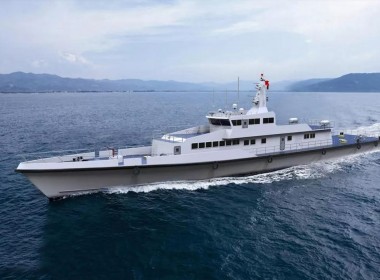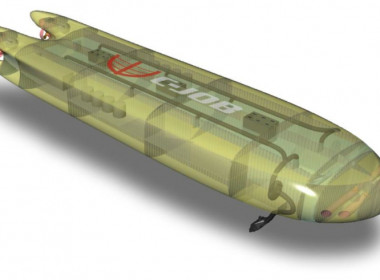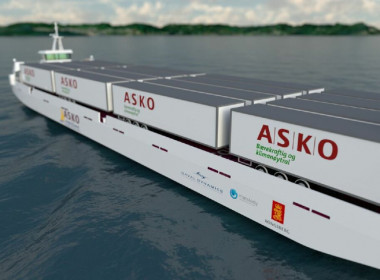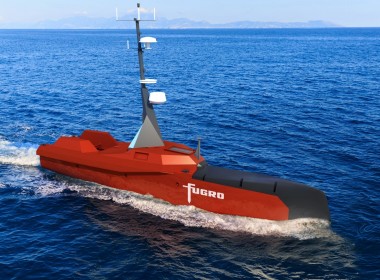OPINION | How should the law treat underwater maritime autonomous vehicles?

Maritime autonomous vehicles (MAVs) have fast become an essential component of the modern maritime security scene and may operate underwater, on the surface, or in the air—though the latter are commonly referred to as drones.
Australia’s 2023 Strategic Defence Review includes MAVs as a critical capability for intelligence, surveillance and reconnaissance (ISR)—and for strike. MAVs are also important in responding to non-traditional maritime security threats including transnational organised crime and illegal fishing activities. As the technology advances, the regulatory framework within which MAVs operate must similarly progress.
While UAVs may entail the most recent technology, they challenge some of the oldest legal rules; starting with the question of whether a MAV is a “ship”. The question matters because “ships” have the right of innocent passage through the territorial sea and transit rights through international chokepoints such as the Strait of Hormuz and the Singapore and Malacca Straits.
There is no universally accepted legal definition of a “ship”. The difficulty emerges in relation to the small, torpedo-shaped gliders, such as China’s Seawing UUV, or its robotic shark. Gliders are ballasted vehicles and so may ascend and descend through the water column, as well as pursue a pre-determined horizontal movement, but they may also be affected in their positioning through ocean currents. China seized a United States glider, which was launched from the USNS Bowditch for oceanographic research; Indonesia fishers have caught gliders believed to belong to China.
“if a MAV is not a ‘ship’, is there still sovereign immunity in relation to this state property?”
In addition, states are developing extra-large uncrewed underwater vehicles” (XLUUVs), which can be armed, have a range of up to 3,000 nautical miles, and are 30 metres long. The US Navy’s 30-year shipbuilding plan envisages a fleet with 18 to 51 XLUUVs, which “will potentially have the capability to deliver multiple payloads at extended ranges”. Britain’s Royal Navy envisages building a similar set of XLUUVs, as does the Royal Australian Navy. The United Kingdom announced it would use an unarmed XLUUV for deterrence and detection of attacks such as that perpetrated against the NordStream gas pipelines in 2022.
Where a MAV has the size and capabilities that may readily meet common perceptions of what is a “ship”, a further question arises around the legal definition of a “warship”. This definition was set out in the late 19th century to distinguish warships from privateers and is reflected in modern international law in Article 29 of the UN Convention on the Law of the Sea (UNCLOS). Two critical characteristics for warships are that they are “under the command” of a duly commissioned officer and that they are “manned by a crew”. Both are problematic for fully autonomous MAVs while it is at least arguable that a remotely controlled MAV may fit within the definition. If a MAV is not a “warship”, it does not have belligerent rights in the law of armed conflict; during times of peace, a coastal state may ask a warship to leave its territorial sea but can take “necessary steps” against other ships considered in violation of the right of innocent passage.
Where a MAV is a ship, UNCLOS provides for the sovereign immunity of both warships and other government ships operated on non-commercial service. Even if a MAV is considered a naval auxiliary, it will still be entitled to sovereign immunity, preventing other countries from arresting and detaining it. However, if a MAV is not a “ship”, is there still sovereign immunity in relation to this state property? The position is not entirely settled under international law, but the US has taken the view that immunity does extend to MAVs and claimed China and Iran violated sovereign immunity in seizing its MAV. China, however, did not seemingly protest to Indonesia following the seizure of its glider (unlike its reaction when its fishing vessels are detained).
“The very design of MAVs may need to better reflect existing international legal standards, rather than expecting the law to always change to meet technological advancements.”
At present, the direction of the law appears to be that each individual state can decide whether a MAV constitutes a “ship”, given that each state decides what will be registered as a vessel and bear its flag. Similarly, each state decides what vessels will be listed as “warships”. It remains to be seen if other countries will challenge these designations, either through formal protest or in the treatment of the MAV when it ventures into that state’s maritime areas.
These legal questions reflect only the starting point of the issues for international law. States will need to decide on the legal status of a remote operator and how allocations of jurisdictional authority will occur when the remote operator is in a different state to the flag state and/or well beyond the vicinity of the vessel itself. Is the remote operator then the master of the vessel with responsibilities to render assistance to those in distress at sea? Who is the master for the purposes of making decisions to ensure navigational safety? The International Maritime Organisation is working to answer some of these questions in the context of commercial shipping. Whether the decisions in that forum have bearing in relation to military MAVs is uncertain.
For the Australian Defence Force, there must also be attention paid to the laws of naval warfare to understand how the current rules-based order will influence the use of MAVs. The potential legal ramifications for the deployment of armed XLUUVs have already been recognised, and distinguished from the advent of aerial drones on the basis that aerial drones “generally have a human in the loop before the weapon is fired, but this may not be practical for an autonomous submarine”. Instead, crewed vessels may be needed to work in tandem with XLUUVs to ensure international legal obligations are met.
The very design of MAVs may need to better reflect existing international legal standards, rather than expecting the law to always change to meet technological advancements. Either way, Australia’s support for the rules-based order necessitates grappling with these international law issues prompted by the increase in and need for MAVs.







